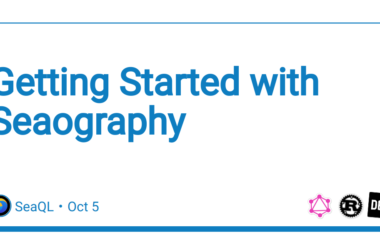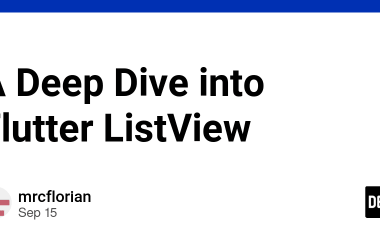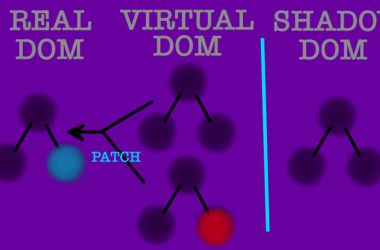Unlocking Data-Driven Insights with Google Cloud Drive Activity API
The modern enterprise generates a massive volume of data from user interactions with cloud storage. Understanding how that data is being used – who is accessing what, when, and from where – is critical for security, compliance, cost optimization, and increasingly, for powering intelligent applications. Imagine a financial institution needing to detect anomalous access patterns indicative of fraud, or a research organization wanting to understand data usage trends to optimize storage tiers. These scenarios demand granular visibility into cloud storage activity. Companies like Snowflake and Databricks are leveraging similar data streams to enhance their data governance and security offerings. As cloud adoption accelerates, and sustainability concerns grow, the need for efficient data management and usage tracking becomes paramount. Google Cloud’s Drive Activity API provides a powerful solution to address these challenges.
What is “Drive Activity API”?
The Google Drive Activity API is a service that streams real-time events detailing user interactions with Google Workspace files stored in Google Drive. It provides a detailed audit trail of actions like file creations, modifications, deletions, views, and shares. Essentially, it’s a change data capture (CDC) stream for Google Drive, allowing you to react to changes as they happen.
The API delivers events in a standardized format, typically through a Pub/Sub topic. This allows for decoupling of the event source (Drive) from the consuming applications, enabling scalable and flexible data processing pipelines. Currently, the API supports events related to files and folders within Google Drive.
Within the GCP ecosystem, the Drive Activity API sits alongside services like Cloud Logging, Cloud Monitoring, and Security Command Center, providing a crucial data source for security information and event management (SIEM) and operational intelligence. It’s not a storage service itself, but rather a data stream about storage activity.
Why Use “Drive Activity API”?
Traditional methods of auditing Google Drive activity, such as relying on Google Workspace Reports, are often batch-oriented and lack the real-time responsiveness needed for many modern applications. The Drive Activity API addresses these limitations by providing:
- Real-time Visibility: React to changes in Drive as they occur, enabling immediate security responses or triggering automated workflows.
- Scalability: The Pub/Sub integration allows for handling high volumes of events without performance degradation.
- Granular Detail: Events contain rich metadata about the user, file, action, and timestamp, providing a comprehensive audit trail.
- Cost Optimization: Identify unused or infrequently accessed files for archiving or deletion, reducing storage costs.
- Enhanced Security: Detect and respond to suspicious activity, such as unauthorized access or data exfiltration attempts.
Use Case 1: Security Incident Response
A security team can subscribe to the Drive Activity API stream and trigger alerts when a user downloads a large number of sensitive files outside of normal working hours. This allows for rapid investigation and mitigation of potential data breaches.
Use Case 2: Data Loss Prevention (DLP)
Integrate the API with a DLP solution to automatically scan newly created or modified files for sensitive data (e.g., PII, PCI). If sensitive data is detected, the system can automatically apply access controls or notify security personnel.
Use Case 3: Compliance Auditing
Automate the generation of audit reports demonstrating compliance with regulations like GDPR or HIPAA by analyzing Drive activity data.
Key Features and Capabilities
- Real-time Event Streaming: Events are delivered via Pub/Sub as they occur, providing immediate visibility.
- Detailed Event Payloads: Events contain comprehensive metadata, including user ID, file ID, action type, timestamp, and location.
- Pub/Sub Integration: Leverages the scalability and reliability of Pub/Sub for event delivery.
- Filtering Capabilities: Filter events based on criteria like user, file type, or action type to reduce noise and focus on relevant activity.
- Schema Definition: Events adhere to a well-defined schema, simplifying data processing and integration.
- IAM Integration: Control access to the API and Pub/Sub topic using Identity and Access Management (IAM).
- Audit Logging: API calls are logged in Cloud Audit Logs for auditing and compliance purposes.
-
Event Types: Supports various event types including
FILE_CREATED,FILE_MODIFIED,FILE_DELETED,FILE_RENAMED,FILE_SHARED, andFILE_UNSHARED. - Resource Names: Events include fully qualified resource names for files and folders, enabling easy identification and access.
- Metadata Enrichment: Events can be enriched with additional metadata from other GCP services, such as Cloud Data Loss Prevention (DLP).
Detailed Practical Use Cases
1. Automated Data Archiving (Data Team)
-
Workflow: Monitor
FILE_MODIFIEDevents. If a file hasn’t been modified in 90 days, trigger a Cloud Function to archive the file to a lower-cost storage tier (e.g., Coldline). - Role: Data Engineer
- Benefit: Reduced storage costs.
- Code (Cloud Function – Python):
from google.cloud import storage
def archive_file(event, context):
file_id = event['data']['resourceName'].split('/')[-1]
# Logic to retrieve file from Drive API
# Logic to copy file to Coldline storage
print(f"Archived file: {file_id}")
2. Insider Threat Detection (Security Team)
-
Workflow: Monitor
FILE_DOWNLOADEDevents. Alert if a user downloads a large number of sensitive files (identified by filename patterns) outside of normal business hours. - Role: Security Analyst
- Benefit: Proactive identification of potential data exfiltration.
-
Config (Security Command Center Custom Module): Define a rule to trigger an alert based on the number of
FILE_DOWNLOADEDevents within a specific timeframe.
3. Collaboration Analytics (Product Manager)
-
Workflow: Analyze
FILE_SHAREDevents to identify frequently shared files and collaboration patterns. - Role: Product Manager
- Benefit: Improved understanding of user collaboration behavior, informing product development decisions.
- Code (BigQuery Query):
SELECT
file_id,
COUNT(*) AS share_count
FROM
`your-project.your_dataset.drive_activity_events`
WHERE
event_type = 'FILE_SHARED'
GROUP BY
file_id
ORDER BY
share_count DESC
LIMIT 10;
4. Automated Access Revocation (Compliance Officer)
-
Workflow: Monitor
FILE_UNSHAREDevents. If a file is unshared with an external user, verify compliance with data sharing policies. - Role: Compliance Officer
- Benefit: Ensures adherence to data sharing regulations.
5. Real-time Data Catalog Updates (Data Governance Team)
-
Workflow: Monitor
FILE_CREATEDandFILE_MODIFIEDevents to automatically update a data catalog with metadata about new or changed files. - Role: Data Governance Engineer
- Benefit: Maintains an accurate and up-to-date data catalog.
6. Automated Workflow Triggering (DevOps Engineer)
-
Workflow: Monitor
FILE_MODIFIEDevents for configuration files. Trigger a CI/CD pipeline to redeploy an application when a configuration file is updated. - Role: DevOps Engineer
- Benefit: Automated application updates based on configuration changes.
Architecture and Ecosystem Integration
graph LR
A[Google Drive] --> B(Drive Activity API)
B --> C{Pub/Sub Topic}
C --> D[Cloud Functions]
C --> E[Dataflow]
C --> F[BigQuery]
D --> G[Security Command Center]
E --> F
subgraph GCP
B
C
D
E
F
G
end
H[External Systems] --> C
style GCP fill:#f9f,stroke:#333,stroke-width:2px
This diagram illustrates a typical architecture. Drive Activity API streams events to a Pub/Sub topic. Cloud Functions can react to individual events in real-time, while Dataflow can process large volumes of events for batch analysis. BigQuery serves as a data warehouse for storing and analyzing historical activity data. Security Command Center can consume events for threat detection. IAM controls access to the API and Pub/Sub topic.
gcloud CLI Example (Creating a Pub/Sub Topic):
gcloud pubsub topics create drive-activity-topic
Terraform Example (Creating a Pub/Sub Subscription):
resource "google_pubsub_subscription" "drive_activity_subscription" {
project = "your-project-id"
topic = "projects/your-project-id/topics/drive-activity-topic"
name = "drive-activity-subscription"
push_config {
push_endpoint = "https://your-cloud-function-url"
}
}
Hands-On: Step-by-Step Tutorial
- Enable the Drive Activity API: In the Google Cloud Console, navigate to “APIs & Services” and enable the “Drive Activity API”.
-
Create a Pub/Sub Topic: Using the
gcloudcommand above, create a Pub/Sub topic to receive events. -
Configure Drive Activity API: Navigate to the Drive Activity API settings in the Cloud Console. Select the Pub/Sub topic you created as the destination for events. You’ll need appropriate permissions (e.g.,
roles/pubsub.publisher). - Create a Pub/Sub Subscription: Create a subscription to the topic to receive events.
- Deploy a Cloud Function: Deploy a Cloud Function that subscribes to the Pub/Sub topic and processes the events. The example Python code above provides a starting point.
- Test: Perform an action in Google Drive (e.g., create a file) and verify that the Cloud Function is triggered and processes the event.
Troubleshooting:
- Permissions Errors: Ensure the service account used by the Cloud Function has the necessary permissions to access the Pub/Sub topic and Drive API.
- Event Delivery Issues: Check the Pub/Sub topic’s metrics for errors or delays in event delivery.
- Schema Validation Errors: Verify that your Cloud Function correctly parses the event payload according to the Drive Activity API schema.
Pricing Deep Dive
The Drive Activity API itself is free to use. However, you are charged for the underlying services it utilizes, primarily Pub/Sub. Pub/Sub pricing is based on:
- Data Volume: The amount of data published to and delivered from the topic.
- Storage: The amount of data stored in the topic’s backlog.
- Operations: The number of API calls made to Pub/Sub.
Example Cost Calculation:
Assume you process 10 GB of data per month and store 1 GB in the topic’s backlog. Based on current Pub/Sub pricing (as of October 26, 2023), this would cost approximately:
- Data Volume: $0.02/GB * 10 GB = $0.20
- Storage: $0.026/GB * 1 GB = $0.026
- Operations: (negligible for this example)
Total: ~$0.23 per month
Cost Optimization:
- Filtering: Filter events at the source to reduce the amount of data published to Pub/Sub.
- Data Aggregation: Aggregate events before storing them in BigQuery to reduce storage costs.
- Retention Policies: Configure appropriate retention policies for the Pub/Sub topic to automatically delete old data.
Security, Compliance, and Governance
-
IAM Roles: Use IAM roles like
roles/driveactivity.viewerandroles/driveactivity.adminto control access to the API. - Service Accounts: Use service accounts with the principle of least privilege to grant access to the API and Pub/Sub topic.
- Cloud Audit Logs: Monitor Cloud Audit Logs for API calls to detect and investigate suspicious activity.
- Certifications: GCP is compliant with numerous industry standards, including ISO 27001, SOC 2, HIPAA, and FedRAMP.
- Org Policies: Use organization policies to enforce security and compliance requirements across your GCP environment.
Integration with Other GCP Services
- BigQuery: Store and analyze Drive activity data for reporting, auditing, and data-driven insights.
- Cloud Run: Deploy serverless applications that process Drive activity events in real-time.
- Pub/Sub: The core integration point for streaming events.
- Cloud Functions: Trigger automated workflows based on Drive activity events.
- Artifact Registry: Store and manage container images for Cloud Run and other services.
- Security Command Center: Enhance threat detection and incident response capabilities.
Comparison with Other Services
| Feature | Drive Activity API | Google Workspace Reports | AWS CloudTrail | Azure Activity Log |
|---|---|---|---|---|
| Real-time Streaming | Yes | No | Yes | Yes |
| Granularity | High | Medium | High | High |
| Cost | Pub/Sub Costs | Included in Workspace | AWS Costs | Azure Costs |
| Complexity | Medium | Low | Medium | Medium |
| Integration | GCP Ecosystem | Google Workspace | AWS Ecosystem | Azure Ecosystem |
| Use Cases | Security, DLP, Automation | Reporting, Auditing | Security, Compliance | Security, Compliance |
When to Use:
- Drive Activity API: For real-time event processing, automated workflows, and deep integration with the GCP ecosystem.
- Google Workspace Reports: For basic reporting and auditing.
- AWS CloudTrail/Azure Activity Log: For auditing activity in AWS or Azure environments, respectively.
Common Mistakes and Misconceptions
- Ignoring Permissions: Failing to grant the necessary IAM permissions to service accounts.
- Overly Broad Filtering: Not filtering events effectively, leading to excessive data processing costs.
- Incorrect Schema Handling: Misunderstanding the Drive Activity API schema and failing to parse events correctly.
- Lack of Monitoring: Not monitoring the Pub/Sub topic for errors or delays in event delivery.
- Assuming Free Usage: Forgetting that Pub/Sub costs apply.
Pros and Cons Summary
Pros:
- Real-time event streaming
- Granular event data
- Scalable and reliable
- Tight integration with GCP ecosystem
- Enables powerful automation and security use cases
Cons:
- Requires Pub/Sub configuration and management
- Pub/Sub costs can add up
- Requires understanding of the Drive Activity API schema
- Initial setup can be complex
Best Practices for Production Use
- Monitoring: Monitor Pub/Sub topic metrics (e.g., message backlog, publish rate) using Cloud Monitoring.
- Scaling: Scale Cloud Functions and Dataflow pipelines to handle peak event volumes.
- Automation: Automate the deployment and configuration of the Drive Activity API and Pub/Sub topic using Terraform or Deployment Manager.
- Security: Implement robust IAM policies and regularly review audit logs.
- Alerting: Configure alerts in Cloud Monitoring to notify you of errors or anomalies.
Conclusion
The Google Cloud Drive Activity API provides a powerful and flexible solution for gaining real-time visibility into user interactions with Google Drive. By leveraging its features and integrating it with other GCP services, you can unlock valuable insights for security, compliance, cost optimization, and data-driven decision-making. Explore the official documentation and try a hands-on lab to experience the benefits firsthand: https://cloud.google.com/drive-activity.





